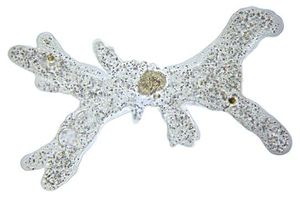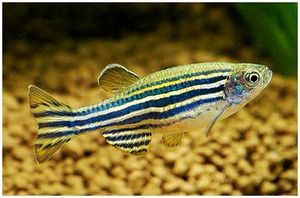‘Omics’ driven technologies
‘Omics’ driven technologies
The ‘omics’ revolution that started in mid 1990s refers to a field of study in molecular biology that addresses the objects such as the genome, proteome, metabolome etc. The suffix ‘ome’ stems from Greek for ‘all’, ‘whole’ or ‘complete’ and refers to a totality of some sort. The aim of this study is to characterize and quantify pools of biological molecules that translate into the structure, function and dynamics of one or more organisms. This holistic approach to understand complex biological systems in encapsulated ‘omes’ also has important applications in biotechnology.
Genomics of marine organisms
Genomics aims at identifying the functions of as many genes as possible of a complete genome of a given organism. Nowadays about 1000 prokaryotic genomes are completely sequenced and annotated, more than half of them are sequenced in function of medical or industrial relevance. Sequencing of phylogenetically diverse microbial genomes is a smaller share of the work that is done in the field of genomics, but still results in the discovery of novel proteins per genome. Nowadays over 7500 bacterial species are already validly described, this shows the potential of the new untapped resources that are waiting to be discovered.
Viruses are the most common biological entities in the marine environment. Recent metagenomic surveys have shown their unique gene pool and their molecular architecture. Viruses infect a lot of organisms, ranging from archaebacteria to mammals. Until now a huge number of viruses still remain undiscovered or are not sequenced and annotated. Therefore they are an important untapped resource of potential novel proteins, genetic tools and unexpected functions.
The study of eukaryotes (comprising microalgae, macroalgae and protozoa) is still in its infancy when it comes to genomics. Compared to prokaryotes, eukaryotes have a much larger genome size and higher cellular complexity, which results in slower progress.
Currently only 30 microalgal genomes are completed.[1] Many microalgae have chromosomal DNA and mitochondrial DNA just like humans, algae however also possess chloroplast DNA. During their hundred million years of evolution they have been subjected to vertical gene transfer (‘mother’ -> ‘daughter’) and horizontal gene transfer (between different individuals, very simplified: the uptake of DNA of their neighbors or prey.). All these features have slowed down the progress made in the field of genomics concerning these eukaryote organisms.
A few macroalgae genomes have already been sequenced, others are still being completed. This will give new insights in these key players of aquatic ecosystems and moreover this will unlock a huge variety of potential bioproducts. There can be found papers on the relevance of sequencing certain algae and on the criteria that need to be met by algae in order to be sequenced.[2]
For protozoa the case is even more difficult. They have an extremely diverse phylogeny, complex life cycles and an even larger range of genome sizes than the microalgae. Chaos chaos for instance is a free-living amoeba and has the largest genome ever reported.[3] The highly polyploid nature of many protozoans (up to hundreds of small chromosomes) also influences the problems considering the genome research. Only 25 protozoan genomes have been completed yet, most of them of medical relevance. A lot of diseases are caused by protozoan parasites such as malaria, Leishmaniasis and Chagas disease, accounting for more than 1.3 million deaths each year. Molecular techniques allow the identification below genus level and it is believed that researchers will be able to translate sequenced genomes into applicable, effective disease control.[4]

|
| Fig 1. Chaos chaos, the amoeba with the largest known genome. |
The study of metazoan genomes is mostly focused on the research of mammals because of their medical and economic relevance. Only 11% of the currently planned sequence analyses of metazoan genomes are focused on marine invertebrates although they substantially have a large phylogenetic diversity. Some mussels and oysters have been sequenced for their importance as aquaculture species. Very few teleost fish genomes have been completed, among them Takifugu rubripes (interesting in fisheries) and the zebrafish (Danio rerio) (interesting for developmental biology).

|
| Fig 2. Danio rerio.[5] |
Metagenomics of marine communities
A younger science flow is the field of metagenomics concerning the analysis of all the genes of a given community of organisms. In metagenomic studies all genes in a community are first separated by complete DNA-extraction, next they are put in large clone libraries and afterwards they are available for use in biotechnological applications. The first studies of metagenomics treated bacterioplankton, these organisms were easy to separate from other organisms. Nowadays a broad range of environments and life forms are targeted. Metagenomics allows the discovery of new microscopic life and allows the sampling of a whole community of microorganisms rapidly in order to make an inventory or to understand a certain ecosystem and its diversity.
References
- ↑ Querellou, J. (2010) MarineBiotechnology: A new vision and strategy for Europe. Marine Board-ESF Position Paper 15.
- ↑ Waaland, J.R.; Stiller, J.W.;Cheney,D.P.(2004; minireview: Macroalgal Candidates for Genomics (2014); J. Phycol. 40, 26–33
- ↑ Friz, C.T. (1968). The biochemical composition of the free-living amoebae Chaos chaos, Amoeba dubia, and Amoeba proteus. Comparative Biochemistry and Physiology 26: 81-90. - Species listed | Record id: [139]
- ↑ Zhiyue, Lv; Zhongdao, Wu; Limei, Zhang; Pengyu, Ji; Yifeng, Cai; Shiqi, Luo; Hongxi, Wang; Hao, Li (2015); Genome mining offers a new starting point for parasitology research; Volume: 114; Issue: 2; pp. 399-409
- ↑ http://toy-fish.ru/danio-rerio-braxidanio-damskij-chulochek-danio-zebra-foto.html